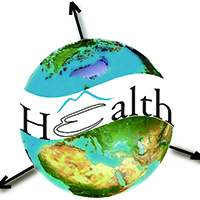Spatial and temporal analysis of the human immunodeficiency virus in an area of social vulnerability in Northeast Brazil

All claims expressed in this article are solely those of the authors and do not necessarily represent those of their affiliated organizations, or those of the publisher, the editors and the reviewers. Any product that may be evaluated in this article or claim that may be made by its manufacturer is not guaranteed or endorsed by the publisher.
Authors
Human Immunodeficiency Virus (HIV) infection still represents an important public health problem, because it involves clinical, epidemiological, social, economic and political issues. We analyzed the temporal and spatial pattern of the HIV incidence in an area of social inequality in northeast Brazil and its association with socioeconomic indicators. An ecological study was carried out with a focus on all HIV cases reported in Alagoas State, Northeast Brazil from 2007 to 2016 using its 102 municipalities as the units of our analysis. Data from the Brazilian information systems were used. Georeferenced data were analyzed using TerraView 4.2.2 software, QGis 2.18.2 and GeoDa 1.14.0. Time trend analyses were performed by the Joinpoint Regression software and the spatial analyses included the empirical Bayesian model and Moran autocorrelation. Spatial regression was used to determine the influence of space on HIV incidence rate and socioeconomic inequalities. There was an increasing trend of HIV rates, especially in the municipalities of the interior. Significant spatial correlations were observed with the formation of clusters with emphasis on the coast of the state and in tourist regions. Spatial regression explained 46% of the dependent variable. The HIV incidence rate was positively influenced by rate of primary health care units (P=0.00), and negatively by Gini index (P=0.00) and proportion of heads of household without or low education (P=0.02). We conclude that the relationship found between indicators of better socioeconomic conditions and HIV infection suggests unequal access to the diagnosis of infection. Prevention and control strategies can be established according to each epidemiological reality.
How to Cite

This work is licensed under a Creative Commons Attribution-NonCommercial 4.0 International License.
PAGEPress has chosen to apply the Creative Commons Attribution NonCommercial 4.0 International License (CC BY-NC 4.0) to all manuscripts to be published.










